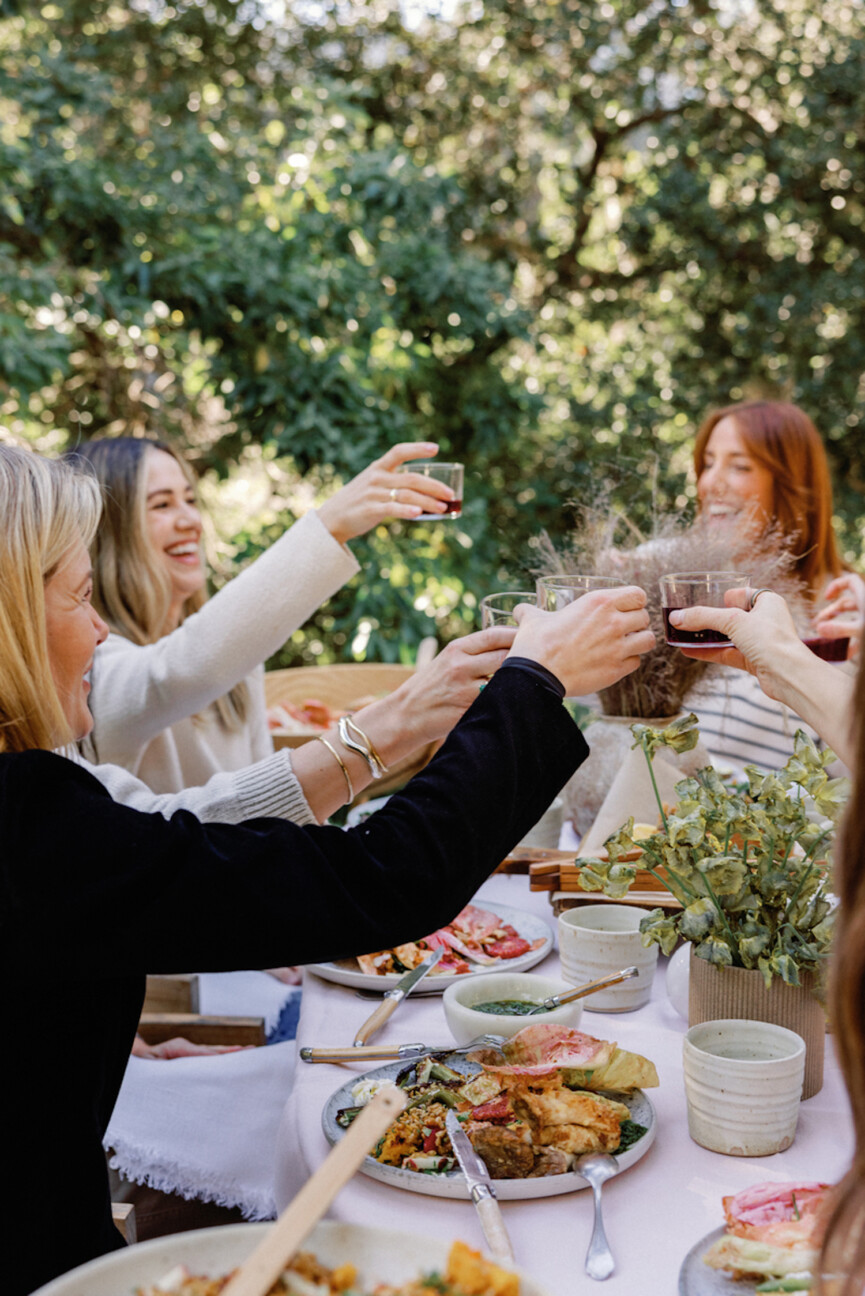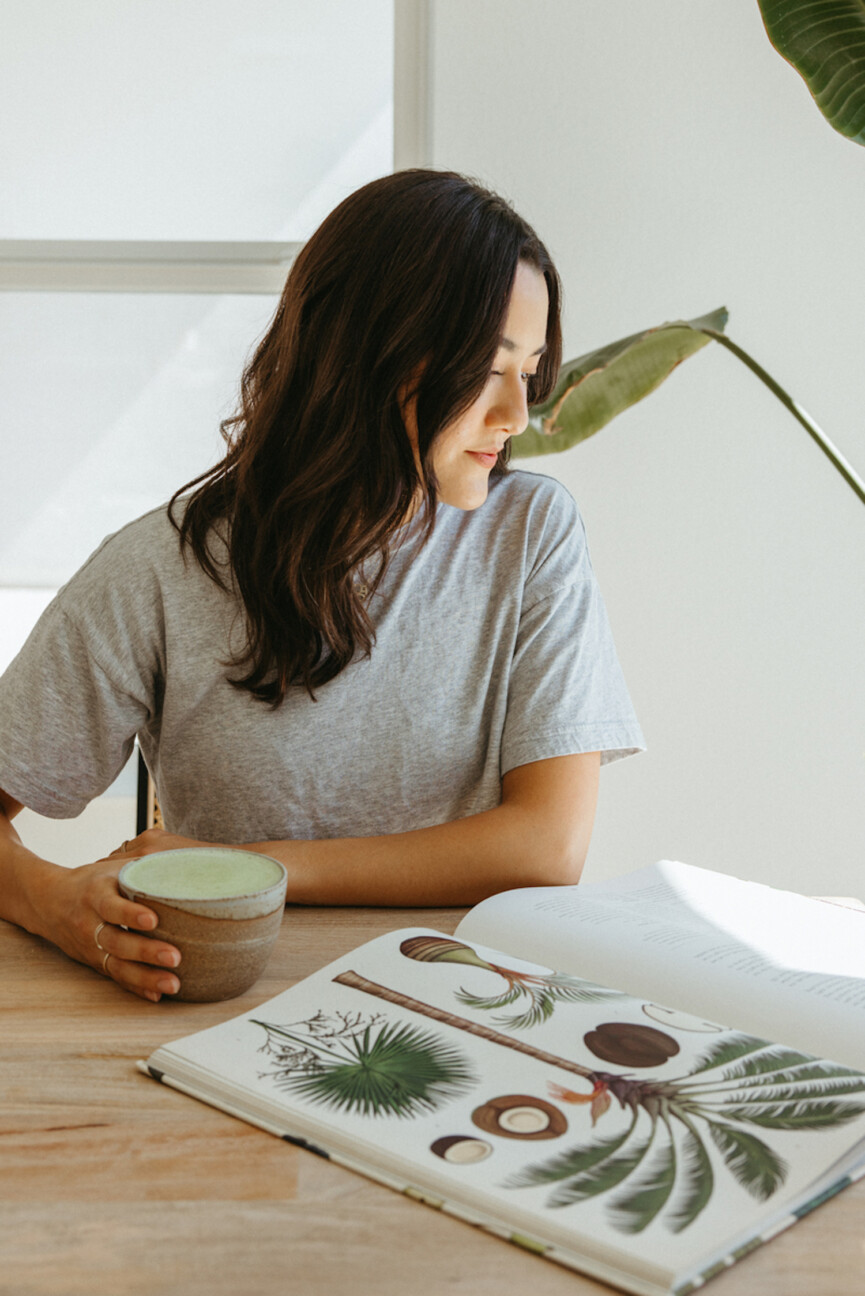I’m four months into 29. On the cusp of evolving into what society considers a full-blown adult, I’ve learned: if you aren’t careful, people will tell you how old to feel. At every turn, I’m met with inevitable questions about marriage, children, and the vague but all-consuming concept of settling down. All around me, little sisters are becoming mothers and friends are buying houses. (To that, I ask: how?) And though I recognize 29 as objectively young, confronting a new decade—the first one the world has historically told me not to be excited for—I’m taking stock. I’m recognizing the woman I’m becoming and learning to embrace exactly who she is.
It’s taken a minute to get to this place—one where I’m looking forward to what life brings versus bemoaning the freedom and abundant collagen stores of my early 20s. Throughout this journey of growth, I’ve learned to look to other women who have asked similar questions, trying to get to the essential root of our experience. Camille, of course, is my go-to for all things aging well. But I’ve also dived deep into the writing of Anne Morrow Lindbergh, Nora Ephron, and Joan Didion for their insightful reflections.
Words have a way of connecting us to the emotions that often lay just below the surface of our subconscious. They pull at and connect us to the truths of our experience—what feels fundamental but perhaps too inherently indisputable to realize. Recently, I’ve garnered many of these truths in reading (re: devouring) Lyn Slater’s memoir, How to Be Old: Lessons in Living Boldly From the Accidental Icon.
Why Lyn Slater’s How to Be Old Is the Defining Book on Aging Well
“Taking control of how you want to live your life and what story you want to tell about yourself is an act that transcends age,” Slater writes in her memoir’s first chapter. Her statement makes clear: our age tells only a sliver of our story. We’re constantly crafting an evolving narrative. What we may want for ourselves at 30 can (and in many ways, should) look entirely different from how we envision our lives at 50. Of course, that holds for every step of our lives—from day to day, moment to moment.
Lyn Slater’s story is full of pivots and continuous evolutions. Formerly a professor of social work at Fordham University in New York, Slater taught while simultaneously taking classes at the Fashion Institute of Technology. In 2014, Slater was taking a class on starting a vintage store when the professor encouraged her to start a style blog. At the suggestion of another student, Slater called the blog Accidental Icon. On it, she posted not only her outfits, but reflections on the clothes and designers, and how they wove themselves into her internal life.
Her writing is poignant and thoughtful. Slater is unafraid to be vulnerable, and an unfettered curiosity emanates from her words. Who else better to learn about what it means to live well than from a woman who’s unafraid to admit that she still—and is always—figuring it out?
“Taking control of how you want to live your life and what story you want to tell about yourself is an act that transcends age,” – Lyn Slater
5 Lessons on Aging and Living Well
I’ve found that the people I admire most in my life don’t pretend to know everything. But still, they proceed with intention. They ask meaningful questions and move through life with a certain orientation always toward inquiry. Why do I feel this way? Does this choice align with what I want? How can I show up each day more and more authentically myself?
It’s this analysis and deliberate way of living that allows certain people to garner more from their experience. Whether you’re 29, 49, or just celebrating your 70th birthday like Slater—learning and growth are always possible. Ahead, I’m sharing my five biggest takeaways from finishing Lyn Slater’s How to Be Old.

1. A Pivot Is Always Possible
“If we change how we think, are willing to risk a little and experiment and view challenges as creative opportunities, suddenly anything is possible. Life when you are old could very well become an unpredictable, wild, and crazy adventure, as it has for me.”
So often, we think of ourselves as being stuck where we are. Whether it’s a relationship, a house, a job—whatever, we believe that we’re either in too deep or simply too far along to change course. This is largely the result of how our society views failure. I once believed that everything I took on—everything I challenged myself with—I had to see through to the very end. Pauses meant slowing my pace and changing direction signified that I had not succeeded in what I at first pursued.
Remember: becoming is a process.
But Slater offers an alternative possibility, speaking not only to the growth inherent in risk but to this opportunity to reorient ourselves elsewhere. Someplace entirely new. The oft-used adage rings true: Growth is not linear. As much as we sometimes wish they would be, our lives do not follow a straight path from Point A to Point B. Instead, we amass knowledge and experience through these winding turns. In many ways, embracing risk and accepting the unpredictable is how we learn about ourselves, and how we come into contact with what truly resonates. Remember: becoming is a process.

2. You Have to Give Yourself the Space to Be Messy
“When I put on Yamamoto’s garments—irregular, with ripped and ragged fabrics and hems—perfection becomes mundane. I have permission to be messy, defiant, imperfect, and unfinished. At the same time I feel feminine, beautiful, and sensual in the space between my body and the drape of the clothes.”
Slater reflects with an intellectual depth on the black and white, imperfect garments of Japanese designer Yohji Yamamoto. These few sentences stand as a reminder that fashion, and the personal style we cultivate for ourselves, is supposed to be fun. It’s meant to communicate how we see, experience, and move through the world. For so many, fashion is seen as the opposite. An exclusionary world that only people of a certain status, body shape, level of beauty, and yes—age, can access.
But through her career and embrace of her role as the not-so-accidental icon, Slater makes clear that there’s beauty, creativity, and excitement to be found when we release ideals of perfection. Instead, being open to the messy and allowing ourselves the freedom to explore, helps us move beyond expectations. And that’s the realm where genius in every sense occurs.

3. Our Relationships Are Everything
“When we have meaningful relationships with others, we are more likely to feel that we have a purpose, that we belong and have a place in the world. We feel valued and seen by others, which creates a sense of well-being and counteracts feelings of invisibility.”
Our friendships, romantic connections, and relationships with our family are valuable, important gifts. From them, we learn, grow, and ultimately expand. Our relationships teach us empathy—how to feel for others and look beyond ourselves. What’s more, they make us feel supported and situate us in the world.
Slater writes of the residual benefits of cultivating intentional relationships throughout our lives. From the advice, recommendations, and information we garner from those we trust, we’re able to move forward in our careers and build up others. But, Slater cautions, it’s important to be purposeful and discerning about which networks we choose to enter. When doing so, we create space for ourselves to thrive. And in Slater’s words, flourish.

4. Aging Does Not Make You Invisible
“[…] youth is not a stand-in for a self. I want women to know that while our bodies may change, the self is ours to imagine; it never leaves us. When we are old, there is often a disconnect between our chronological age and how old we feel on the inside […] All the ages we have ever been live inside us.”
In her memoir, Slater reflects on several of the messages she’s received from female followers about their fears of aging. And as she notes, while many share similar thoughts, they come from women of all ages. It seems that, as women, we have something to lament or mourn at every stage of our lives. That’s because traditionally, society holds our value in things that are inherently fleeting. Our youth, our ability to reproduce, our energy and vitality. Whereas men are given value through not only their strength but also their thoughts, women have been held to the expectation that our meaning exists externally.
But a woman’s internal world is something to honor, celebrate, and preserve. It’s something that grows alongside us, and we’re always able to access its multitudes. As Slater writes, it’s the self that amasses all we’ve ever felt, experienced, and known—and we carry that wisdom all throughout our lives. So it’s okay for that disconnect to exist. In many ways, it always will. You’re allowed to feel the excitement and inspiration you felt at 25 now at 60. You’re allowed to dress beyond what may be considered conventionally “appropriate.” And you’re allowed to take up space in the world exactly as you feel—exactly as you are.

5. Your Perspective Will Always Hold Value
“I’ll remember what I have learned about how to be old; I’ll find pearls of wisdom and gemstones of insight that reflect the light, embellishments that add beauty and sparkle to whatever I may decide to wear. That makes me, an older woman, someone of value in the world.”
A recurring theme Slater revisits often in the memoir is our desire to be known. It’s a wanting I’ve felt all throughout my life—confirmation that how you see the world reflects what others experience as well. Not only that, but reassurance that you, existing as you are, are someone of worth. That you add something special and impossible to recreate.
At a younger age, I thought, as many women do, that value was to be found in my beauty—in what I could offer to the male gaze (or any gaze, for that matter). However, I now understand that my primary value comes in the knowledge, curiosity, compassion, and empathy I reflect outwards. As Slater notes, those learnings are the “embellishments” that yield true and unchanging beauty. And no matter our age, that innately unique perspective is something we can all offer and the certain sparkle we can all radiate.

